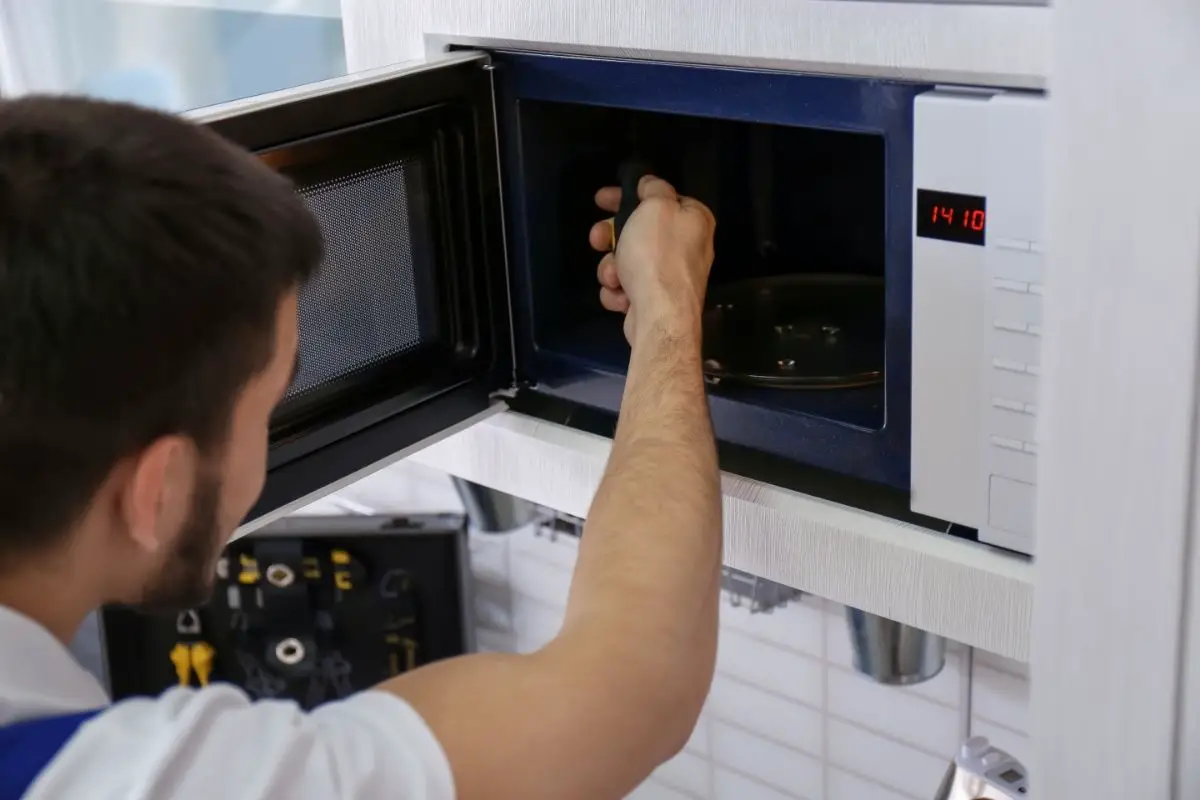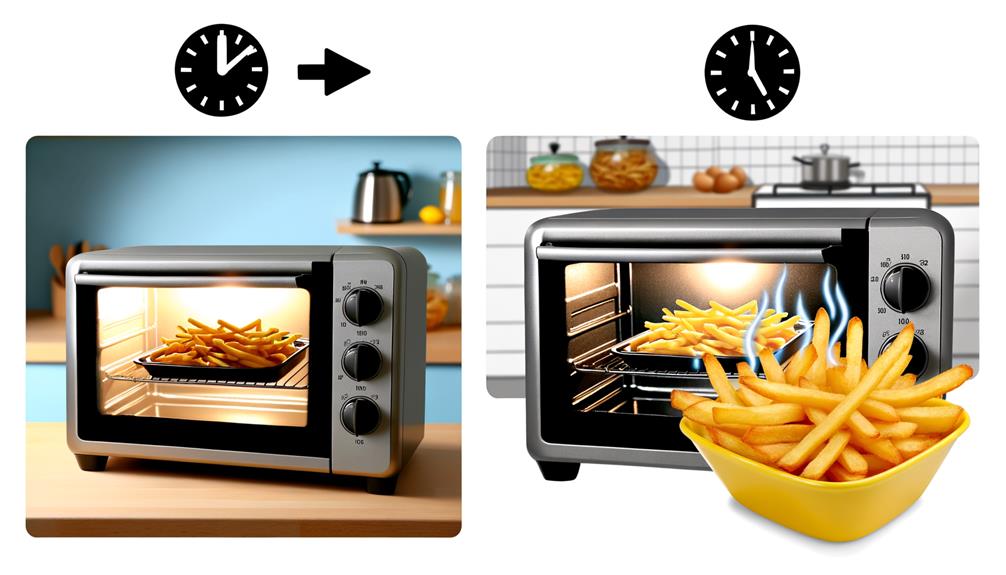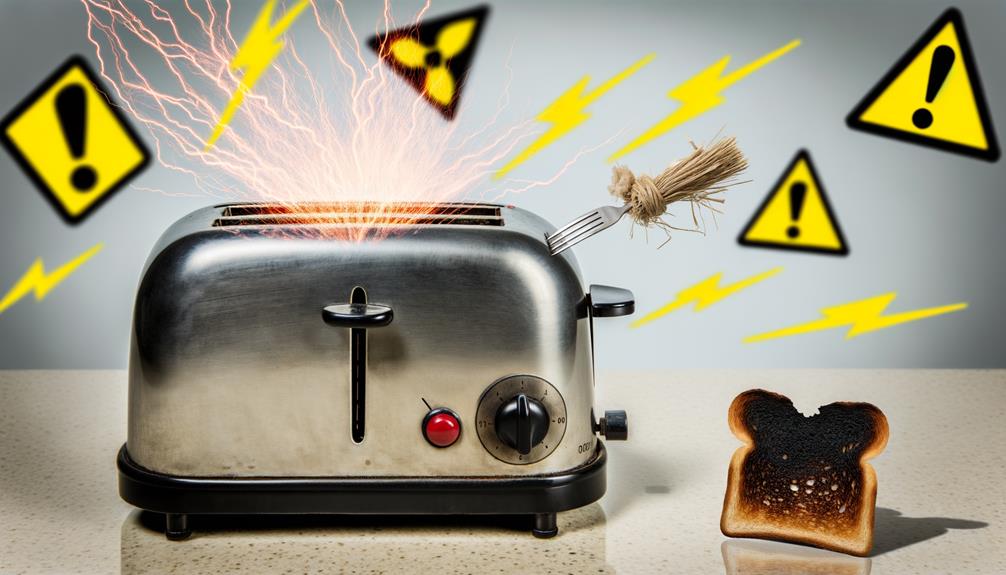Microwaves are great for heating food, but they aren’t always reliable. Sometimes, they burn or explode. But how can you fix them?
Table of Contents
Toggle
Microwaves can be very useful appliances. They heat food faster and evenly than conventional ovens. In addition, microwaves are energy efficient and safe.
However, if they break, it can be a bit of a stressful situation, and you might be wondering if you can fix it yourself.
Well, you can repair a microwave yourself, but sometimes it’s easier to get professional help.
If the problem is easily fixable at home, this article gives you a guide on how to do so for you to save those extra dollars and avoid going through the hassle of hiring someone professional.
Let’s dive right in.
Common Problems With Microwaves (And How To Fix Them)
Overheating And Exploding
The most common problems with microwaves are overheating and exploding. The first one happens when your microwave gets too hot.
This usually occurs because there was something wrong with the fan or venting system.
When this happens, you will notice that the inside of your microwave becomes warm to the touch. It could also cause some smoke to come out of the vents.
These symptoms indicate that the temperature inside the microwave has risen above its normal operating range.
Fortunately, this is easy to remedy. Just turn off the power switch and wait until the temperature drops back down to normal.
Once the temperature returns to normal, you should be able to continue using your microwave again.
Touchpad And Display Not Working
You might also notice the touchpad on your microwave does not work or does not respond, yet the display still lights up.
This is most likely that the membrane switch or the control board are not functioning properly.
To access the membrane switch, you need to unplug the unit and take off the cabinet.
The membrane switch is usually attached to the control panel and connected to the control board via a ribbon connector.
Check this connection, and if it seems to be connected, test the membrane switch using a multi-meter.
There should be just a few ohms of resistance for each touchpad when this is pressed.
To perform the test you will need the matrix layout of the membrane switch, and this should be contained in the electrical schematic, so you’ll need to break out the manual!
Microwave Makes An Unusual Noise
If your microwave is making a strange noise, chances are that it is due to a loose part.

For example, if you hear a loud humming sound coming from the microwave, then check the filter capacitor. If it is damaged, replace it.
Another possibility is that a component is shorted. To find out which one, use a multimeter. If you see any voltage readings, then you know that the component is shorted.
Moreover, the motor which drives the roller guide is held in place with a retaining screw and should have two wires attached.
If this motor starts making a grinding noise, this is a sign it needs to be replaced.
Microwave Doesn’t Turn Off
If your microwave doesn’t switch off when the door is open, your problem might lie in the door switch.
This is the mechanism that allows the door to close automatically after cooking is finished.
If this switch isn’t working, you’ll need to contact a service technician to fix it.
To work out if this is the case, unplug the microwave and remove the cabinet. The interlock switches should have wires coming from the terminals marked common (C) and normally open (NO).
You should look at the switches for continuity and use a multi-meter. The closed-door should depress the actuator, and you should notice continuity between the terminals.
When the door is open, there shouldn’t be any continuity, and if there is, the switch needs to be replaced.
Microwave Doesn’t Turn On
If your microwave doesn’t turn on, this might be caused by a faulty circuit breaker.
To confirm this, disconnect the power supply cable and plug it into another outlet. If the microwave turns on, then the problem lies elsewhere.
However, if the microwave doesn’t turn on even though the power cord is plugged in, then you might need to call a service technician.
Microwave Is Running But No Food Is Cooking
This could mean that the oven’s timer has stopped counting down. To reset the time, press the button on the front panel until the countdown begins again.
Alternatively, you can try pressing the Start/Stop button located on the back panel. If neither solves the problem, you may need to call a service tech.
Microwave Stays Hot After Being Used
If your microwave stays hot after being used, this means that something inside the microwave is overheating.
To determine what the cause is, first turn off the microwave and wait 10 minutes before turning it back on.
If the temperature drops significantly, then you need to get rid of whatever is causing the heat.
If the temperature remains high, then you need to call a service professional.
Hiring A Professional
If all else fails and you’re having trouble fixing your microwave yourself, you can hire a professional to do it for you.
There are plenty of companies that specialize in repairing microwaves. Some even offer free estimates.
All you have to do is call them up and ask what needs to be done. Then, once you’ve found a company that does what you need, you can schedule an appointment.
Microwave repair is not as easy as many people think. It requires some specialized tools and knowledge.
Many homeowners struggle to properly repair their microwaves themselves and this is when, sometimes, hiring a professional can be worth it.
If you are still unsure, the best way to know whether or not you need to call a professional is to check the manual.
If you don’t see anything about repairing yourself, or you find information on how to repair your microwave, but nothing on how to replace parts, then you should maybe think about calling someone.
Final Thoughts
We hope after reading this article you have learned a few tips and tricks on fixing your microwave when it starts playing up.
Remember, some repairs require the work of a professional, but if you feel like having a go yourself, follow our guide, and you should hopefully have your microwave up and running again in no time!
Most problems occur through overheating and overuse, so ensure you always allow time to cool and keep an eye on temperatures when the food has finished cooking.
This can be key to prolonging the overall lifespan!









